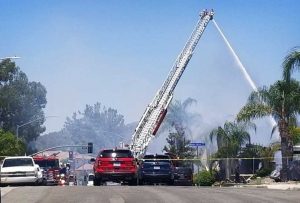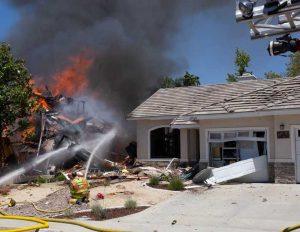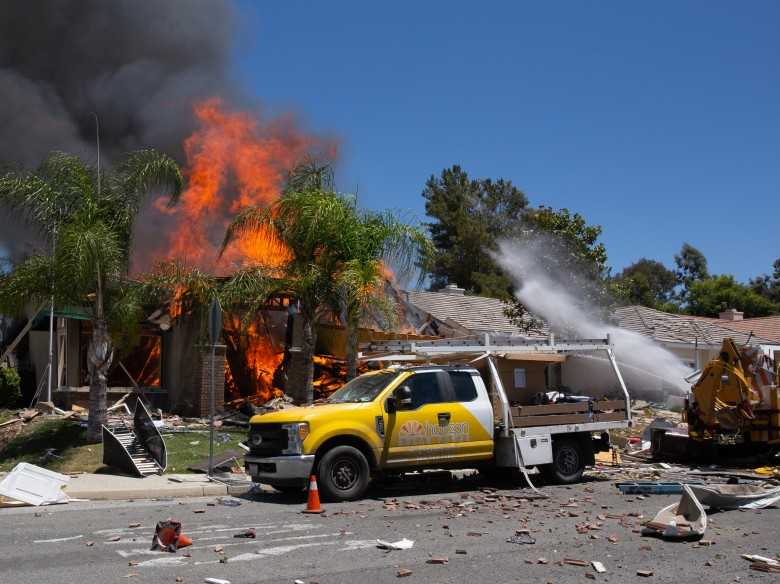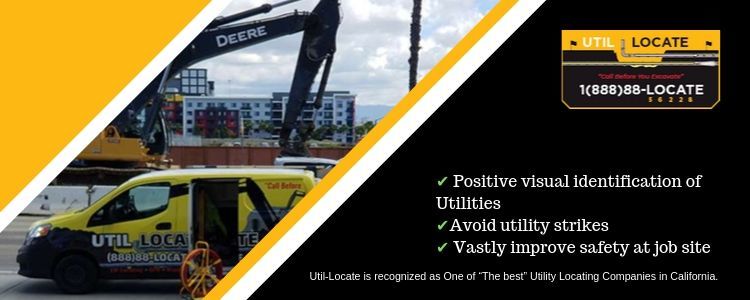Southern California was recently devastated when a ruptured gas line led to an explosion. The explosion killed a Southern California Gas Company worker, and fifteen people were injured.
 The reason behind the Murietta explosion was a contractor who was working without having the area inspected first. The contractor not only caused irreversible damage but violated state law by not utilizing a private utility locating service. Tragedies like this can be avoided when proper utility potholing and inspections are used.
The reason behind the Murietta explosion was a contractor who was working without having the area inspected first. The contractor not only caused irreversible damage but violated state law by not utilizing a private utility locating service. Tragedies like this can be avoided when proper utility potholing and inspections are used.
What is Utility Potholing?
Potholing is a construction method that confirms underground utilities and obstructions. Utility locating is the first part of the investigation process. A small, exploratory hole is dug along the planned route of new construction. Air and hydro vacuums are used to remove soil via high-velocity suction.
Some contractors like to use digital locators to find pipes and other utility lines. There are many occasions, however, where it is essential to actually see where the wire or pipe is located.
Why Pothole?

Digging without first locating underground utilities creates a risk to gas, electric, communications, water, and sewer lines. Accidents with these lines can result in service disruption, costly repairs, serious injuries, or death. While it may mean delaying a project, knowing where lines are before you dig ultimately makes sure projects are entirely safe.
Why vacuum excavation?
In the past, potholes were dug with large machines, like backhoes. Unfortunately, even a skilled backhoe user runs the risk of damaging the very utility they wanted to protect. Some companies resort to digging by hand. While this method required less machinery and skill, it is somewhat labor-intensive. A shovel is unlikely to cause damage to a water pipe, but could completely sever fiber optics or other communication lines.
The current preferred method of potholing is vacuum excavation. Vacuum excavation happens after utility locating and verifies the utilities by exposing them for visual identification. This method allows for small holes to be created with a much lower risk of additional damage. Vacuums also can create holes of different sizes and depths without extra manual labor. Read more about how to pothole for utilities.
Plan before you dig!
Whether you are doing the work yourself or hiring a contractor to take over, you must plan appropriately. Even smaller projects, such as planting trees or shrubs, require knowing what’s beneath the ground. Many utilities are only buried a few inches below ground, which makes them easier to hit when performing simple gardening projects.
Make sure to call several days before you plan on putting a shovel to the ground. Be careful as some programs only mark the area where utility lines are placed. You may also have to wait for multiple companies to take care of marking the area. Also, be aware that utility companies may not go onto private property. For a better response and completion time, consider going with a private utility locator company.
While some accidents are avoidable, many accidents don’t need to happen.  The explosion in Murrieta destroyed more than a house; it took a person’s life. Contractors might think they know better, that they are skilled enough to work around utilities, or they want to save time on a project. However, taking the extra time to identify underground obstructions is the best way to ensure your project is completed without tragedy.
The explosion in Murrieta destroyed more than a house; it took a person’s life. Contractors might think they know better, that they are skilled enough to work around utilities, or they want to save time on a project. However, taking the extra time to identify underground obstructions is the best way to ensure your project is completed without tragedy.


